A no-compromise, compact Android flagship has been a long-time coming, at least in India. We’ve seen brands fiddle with the idea of a pint-sized powerhouse before, however, the ventures haven’t exactly panned out in favour of the product. There is no denying that there is, in fact, an audience for compact smartphones in the country. On that note, ASUS wants to have a go at the segment with the 8Z smartphone, which is the smallest Android phone to be backed by Qualcomm’s Snapdragon 888 processor. I have spent some time testing the device and here’s why I feel that the company might be onto something here.
Verdict
The Asus 8z has a lot going for it, and the handset’s compact footprint sets it apart from the herd of other high-performance flagships. That said, there are some inherent downsides to using a pint-sized phone and buyers opting for the handset will have to contend with the phone’s sub-par battery life, among other things.
Design
The ASUS 8z is simply put, the most comfortable phone I’ve used to date. More importantly, the device is a testament to ASUS’ versatility too. You see, after launching what many consider to be the bulkiest Snapdragon 888 phone in the form of the ROG Phone 5, the company did a complete 180 by announcing the 8z which, for all intents and purposes, is a miniaturised flagship. That’s not all, as not only did ASUS manage to bring the 8z’s footprint down, but the company tweaked its design to make the smartphone’s small form factor stand out that much more.
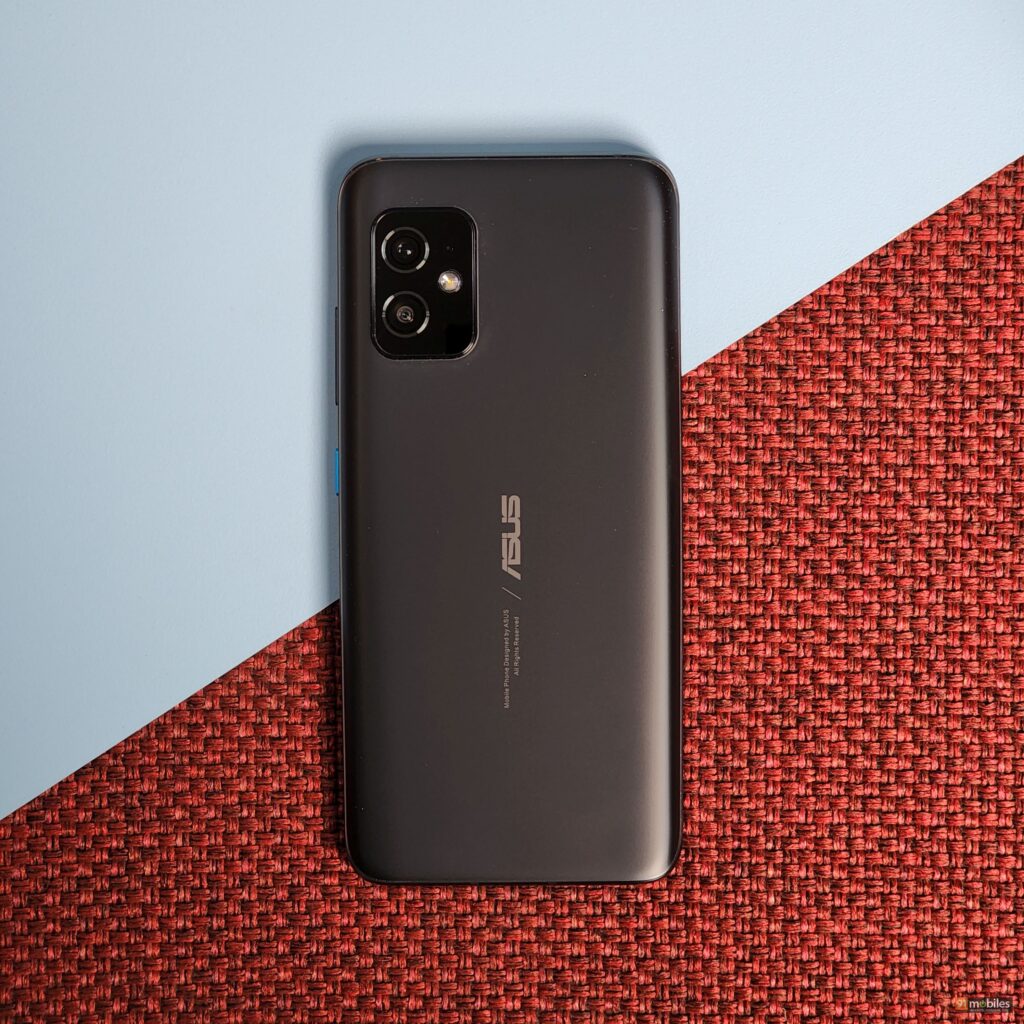
For one, the ASUS 8z ships with a curvy back that helps grip the phone better. The button placement on the 8z deserves a mention too and both, the volume rocker as well as the power button were well within my thumb’s reach. And, despite employing premium materials for the handset’s design, the 8z tips the scales at just 169 grams too. Suffice it to say, after years of using phones with massive screens, the 8z’s petite frame comes across as a breath of fresh air.
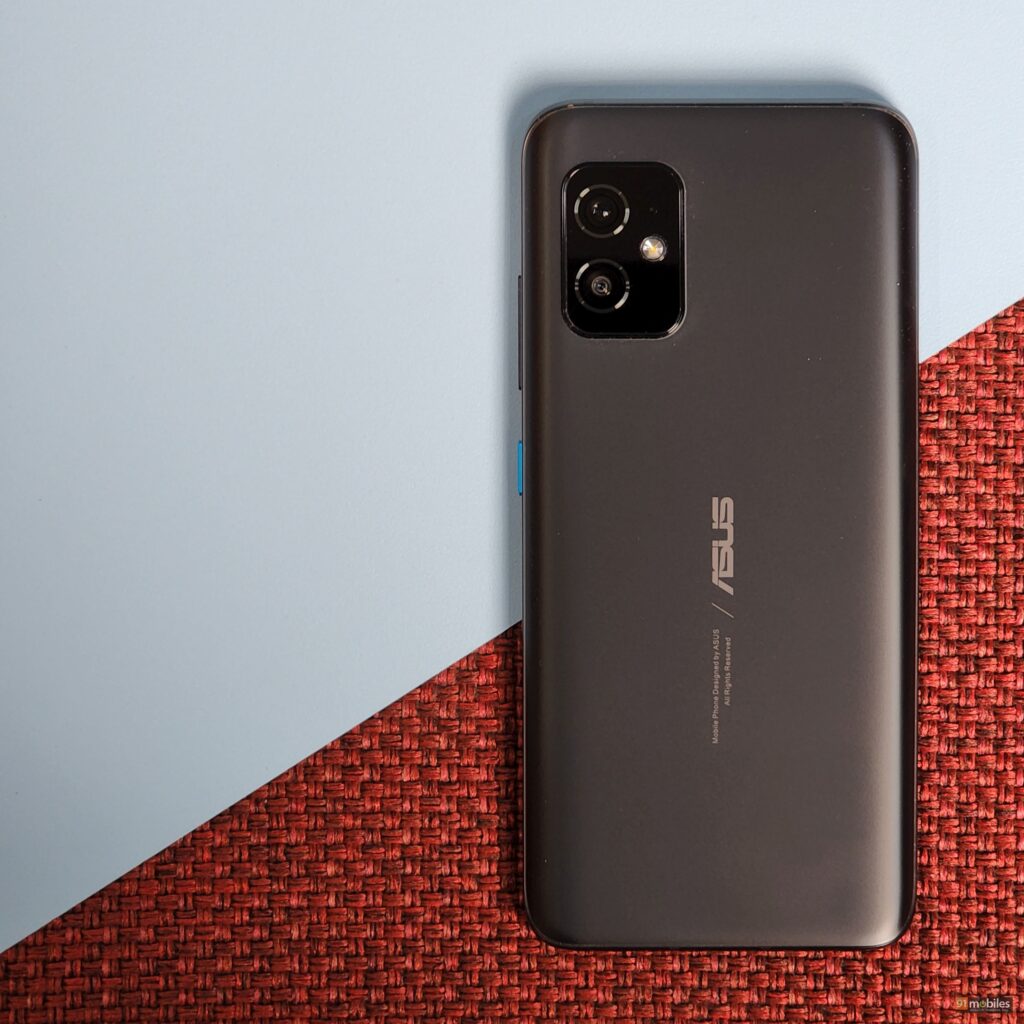
Ergonomics aside, I was quite happy with the 8z’s aesthetics as well. The back of the phone, for instance, employs a frosted glass finish that feels velvety to the touch – so much so, I used the phone without a case for the longest time. The fact that the handset features Corning’s Gorilla Glass v3 on the back and Gorilla Glass Victus on the front bolstered my confidence that much more. Of course, it’s always advisable to safeguard your smartphone purchase with a protective case. Thankfully, ASUS bundles a rather stylish one with the retail packaging of the 8z, which is nice.
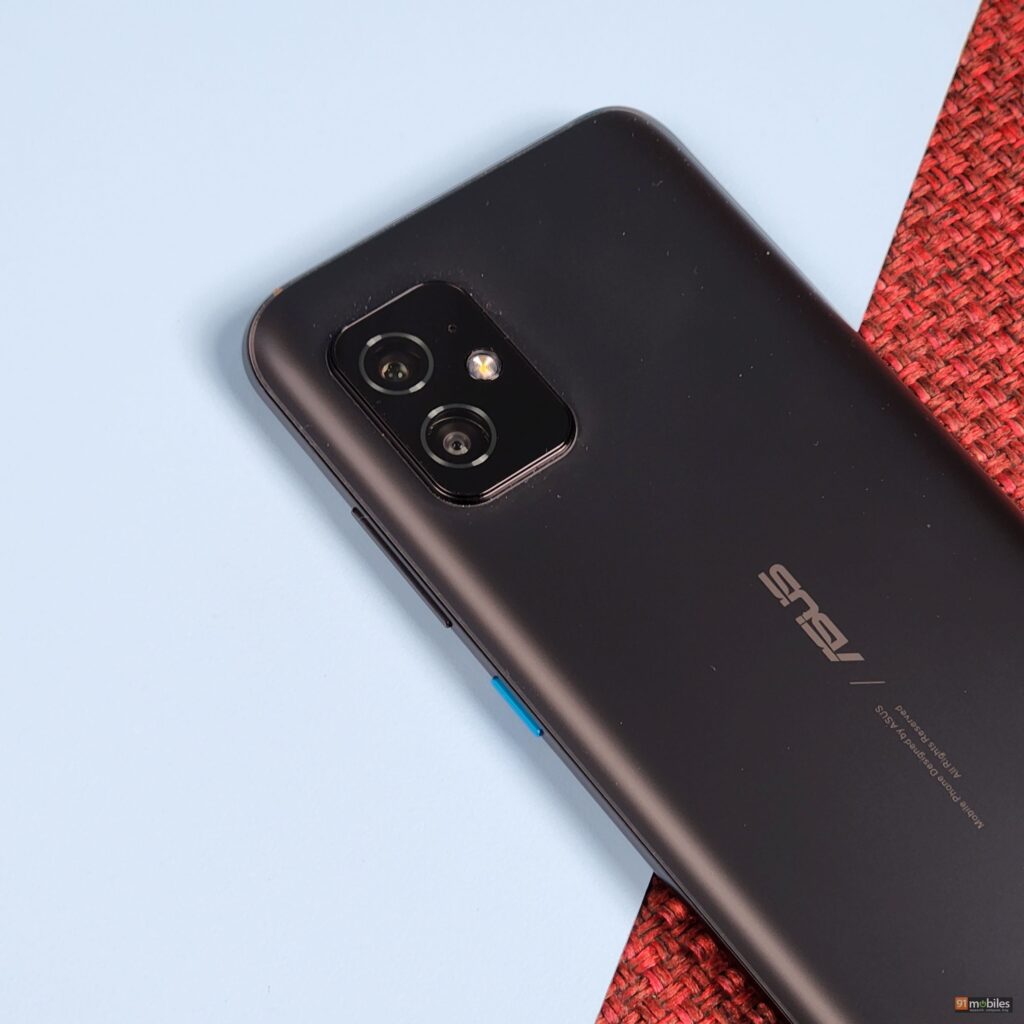
Coming back to the design of the phone, the 8z is available in two different hues of Obsidian Black and Horizon Silver. If you’re looking to liven things up, I’d say opt for the silver colourway. However, the phone looks timeless as ever in the matte black hue too, so you can’t go wrong with that either. Thankfully, both the colourways are furnished with a frosted matte coating on top which, by the way, keeps smudges at bay as well. Moreover, ASUS has incorporated a bright blue power button that adds just the right amount of pizzaz to the phone’s otherwise understated looks.
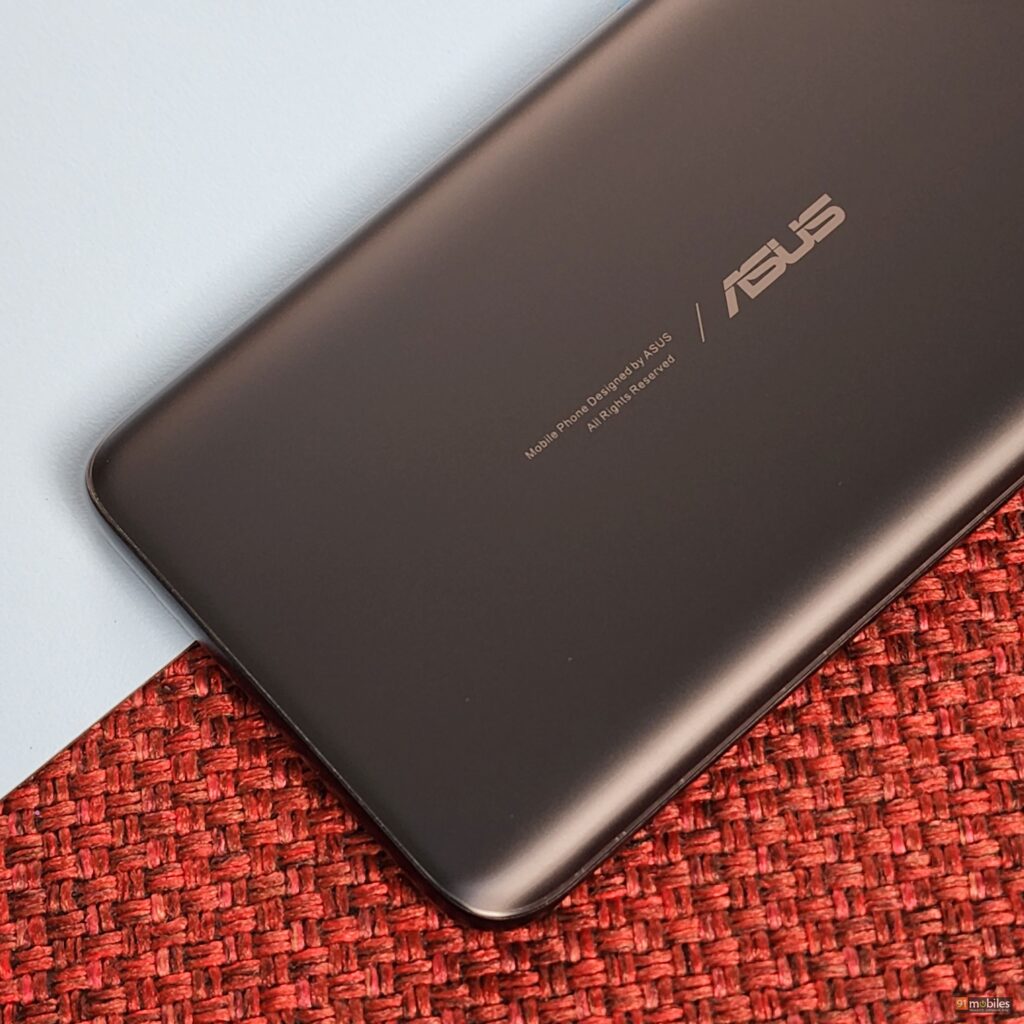
In terms of I/O, the ASUS 8z comes with a Type-C connector at the bottom, that is sandwiched between a notification LED and a speaker grill. Towards the top, the smartphone features a hi-res certified, 3.5mm headphone jack. The fingerprint sensor is positioned underneath the display and it worked flawlessly during my testing. The facial recognition tech, on the other hand, was a bit flaky. On the flip side, the smartphone ships with excellent haptics and I had a joyous time typing on the phone.
Display and Audio
The 8z’s 5.9-inch display is a feast for the eyes too. The screen makes use of sAMOLED technology and ships with Full HD+ resolution, making it plenty sharp and vivid for everyday use. What’s more, the smartphone even supports HDR playback from OTT services like Netflix and the display can get really bright at 1,100 nits too. Rest assured, the 8z’s screen will be legible even when it’s sunny outdoors.
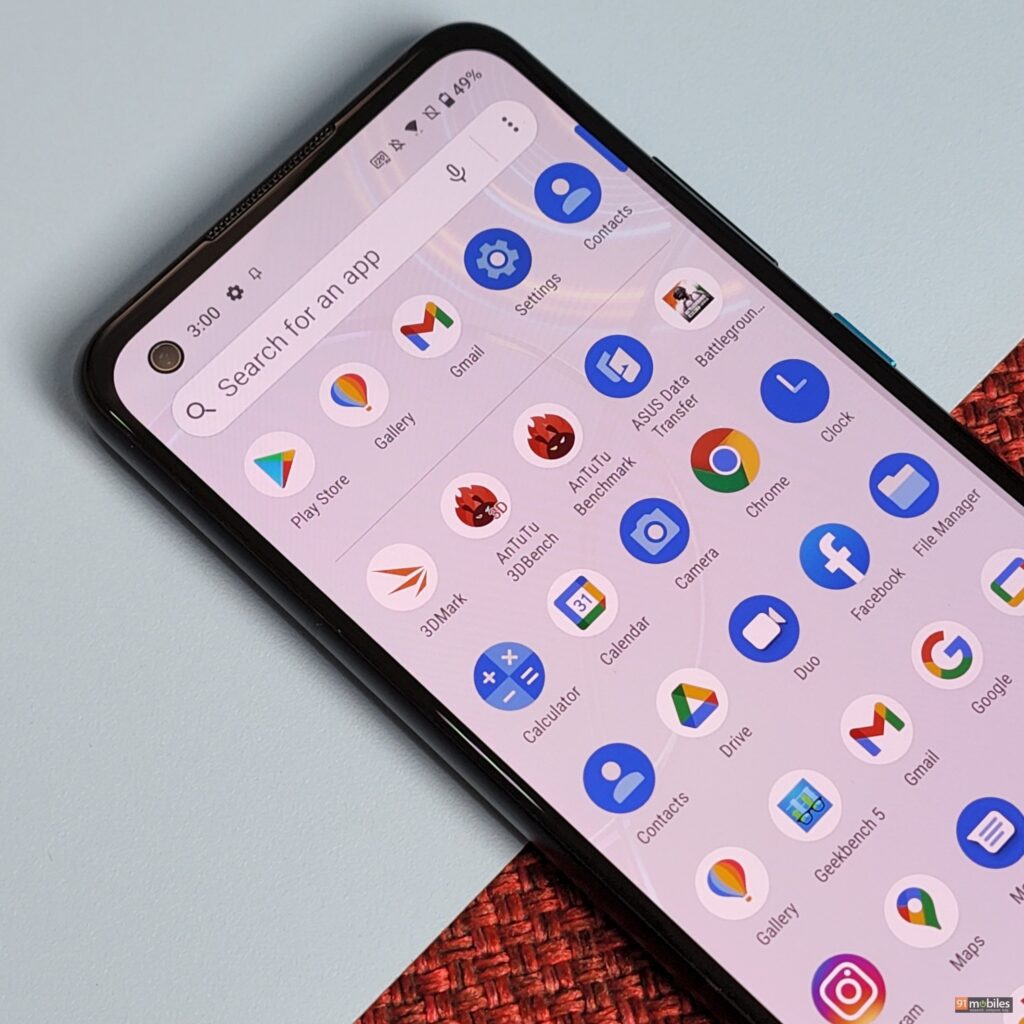
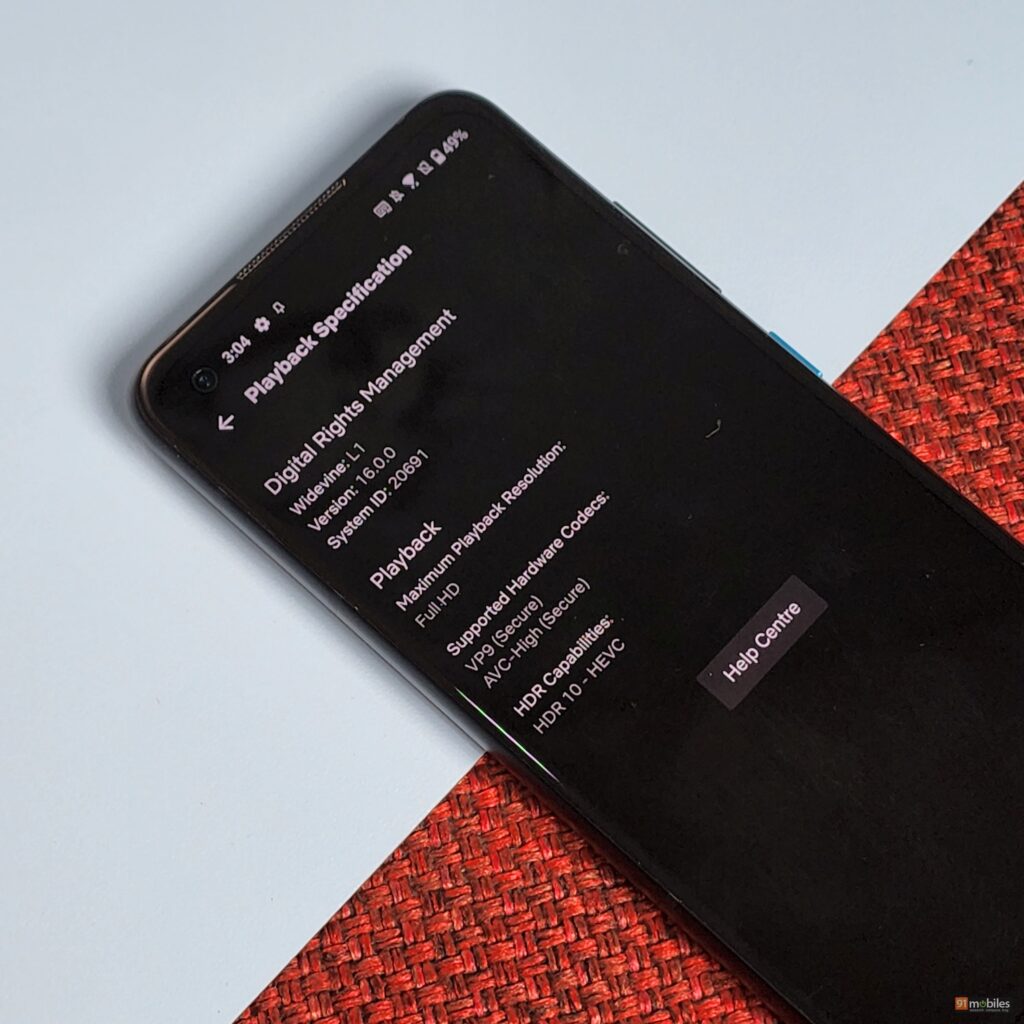

While the 8z’s display might not be everyone’s cup of tea, the smartphone will undoubtedly woo you with its audio setup. For one, the handset’s dual-speaker setup gets extremely loud and the audio relayed through the set retains clarity even at high volume levels. What’s more, the speakers offer good depth to the music and dialogues and don’t sound shrill either. That’s not all, as the 8z joins the dwindling list of flagships to ship with a headphone jack as well. ASUS has even gone the extra mile and outfitted the device with hi-res chops, ensuring you can make the most of your lossless library when using the 8z as a source. The icing on the cake is that, unlike most phones, the 8z even comes with a built-in EQ, which should offer some assistance in tuning your earphone’s frequency response.
Cameras
I’ve always admired the colour science of images shot from ASUS phones and the 8Z is no different. Spec-wise, the smartphone ships with a 64MP Sony IMX686 sensor that works alongside a 12MP Sony IMX363 ultra-wide angle sensor. For selfies, the device features a 12MP Sony IMX633 sensor upfront.

The same goes for the smartphone’s wide-angle sensor too, which offers adequate sharpness towards the corners of the photo, as well as the centre of the frame. Unfortunately, the unit doesn’t do justice to the darkened bits in a scene, which lack satisfactory details and are flush with noise too. As for lowlight, the smartphone’s dedicated night mode does enhance the visibility of the subjects in the frame, however, the shots are rendered a tad soft. Regardless, the photos can pass off as worthy stills on social media apps.

Performance and Software
The ASUS 8z is the smallest phone to employ Qualcomm’s Snapdragon 888 processor. What’s more, the company has furnished the handset with speedy RAM and storage too. Consequently, buyers eyeing the device will be greeted with 8GB of LPDDR5 RAM that works with either 128GB or 256GB of UFS 3.1 storage. Now, it’s no secret that the Qualcomm Snapdragon 888 processor runs hot, so how does the SoC fare in the 8z’s tiny chassis? Well, the answer to that is not as black and white as I’d like it to be. Let’s take a look at the benchmarks first and here, you can see that the device nets compelling numbers in synthetic testing apps like Antutu, GeekBench and AndroBench.
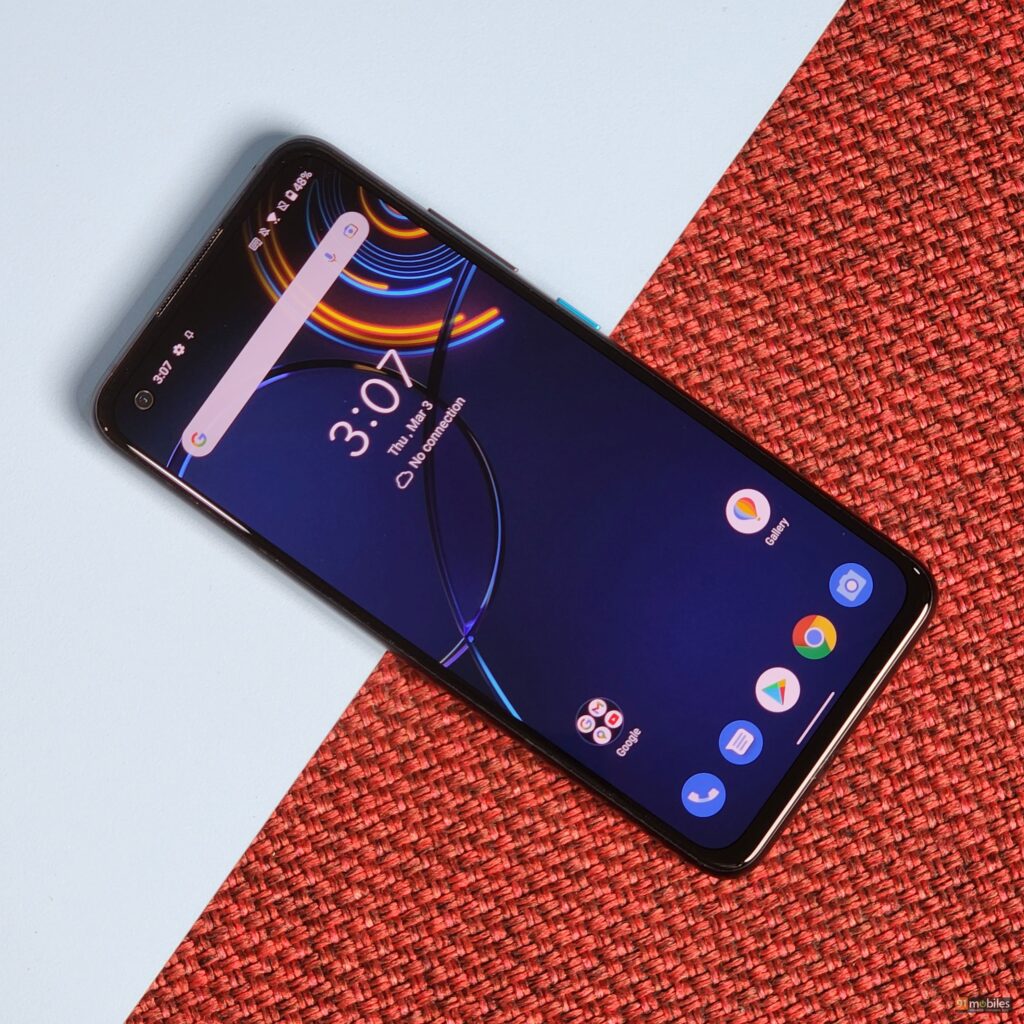
Similarly, the smartphone can run graphically intensive titles like BGMI and Call of Duty Mobile at the highest graphics preset too – so far, so good. However, the handset’s temperatures spike when running taxing apps and games on the phone. To give you a better picture, I ran 3D Mark’s extreme stress test on the phone and in the interim of 20 minutes, the handset’s temperature rose from 28 degrees to 41 degrees.
Don’t get me wrong – the 8z performs superbly and I didn’t run into any lag or stutters whilst daily driving the handset. However, that’s not to say that the smartphone’s performance is without any faults and if you plan on using the phone to play a lot of games, then you will notice the frames dip every once in a while. A more visible change would be the handset’s battery life, which depletes at full tilt whilst running synthetic tests or games on the 8z. In fact, despite using the phone moderately, I had to plug in the 8z around 6 PM in the evening. Quite frankly, I wasn’t expecting the phone’s 4,000mAh cell to last me a full day, given how the device employs a power-hungry SoC too. That said, you might be able to squeeze more screen time from the phone if you use the device with the display refresh rate set to 90Hz.
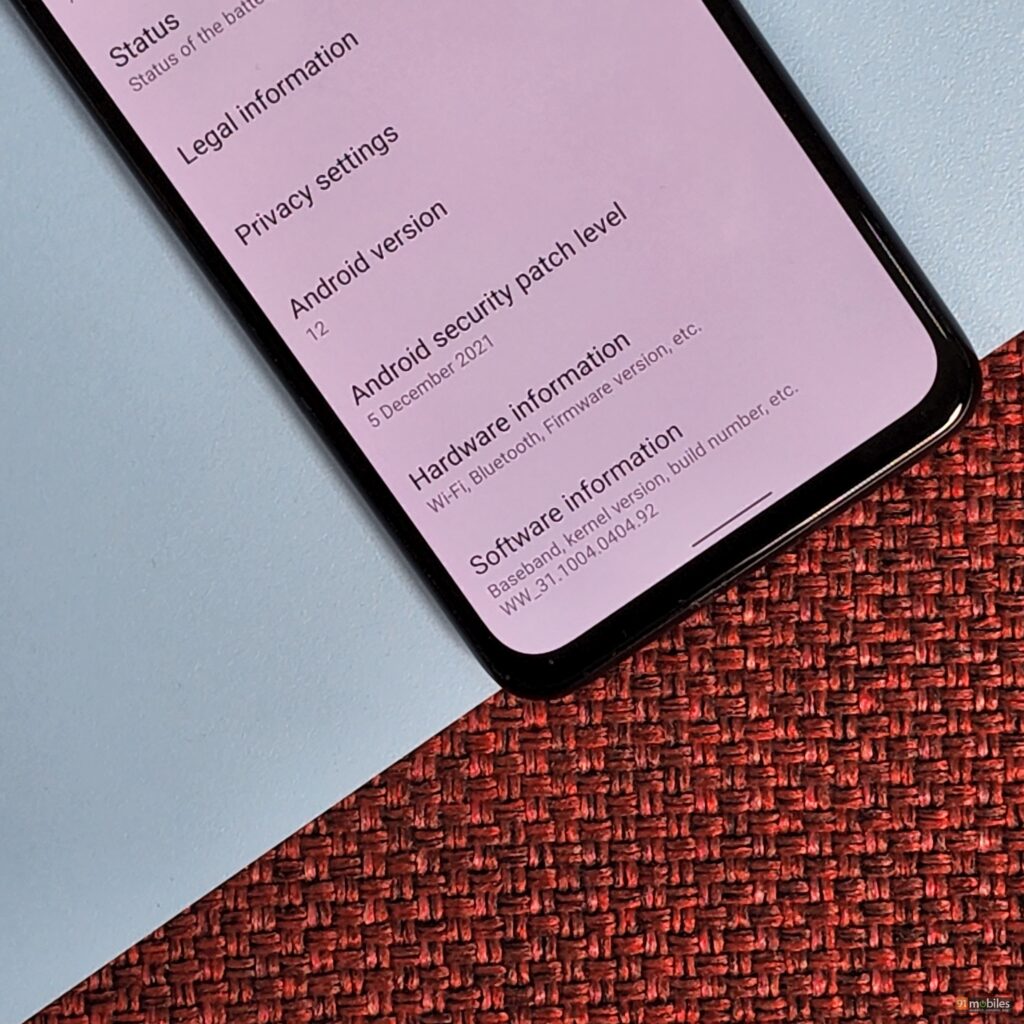
In terms of software, the ASUS 8z Android 12 with a custom skin on top. The interface offers a no-frills experience and resembles stock Android. What’s more, the utility doesn’t ship with any bloatware either, which is great. On the flip side, I would’ve liked to see more customisation options with the device which, as of writing this review, are limited to changing the folder style, icon label and scrolling effects for the baked-in launcher.
Final Verdict
The ASUS 8z retails for Rs 42,999 in India and for the price, gets most things right. For one, the device offers a capable CPU which should last buyers a good while. Furthermore, the handset’s main sensor can click compelling photos too. The icing on the cake is that the phone features a fantastic audio setup too, ensuring buyers opting for the set have all their music streaming needs covered.
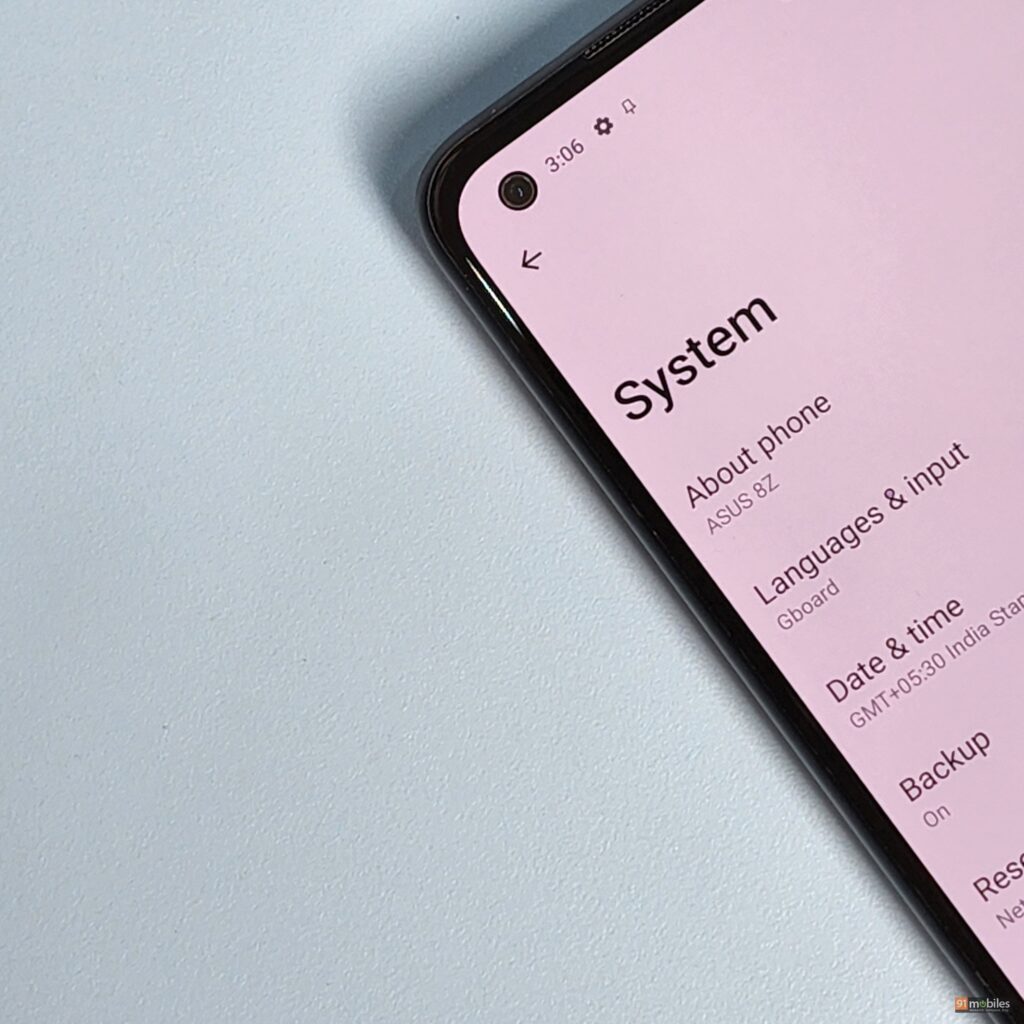
Editor’s rating: 3.5 / 5
Pros:
- Compact form factor
- Capable performer
- Main sensor clicks good photos
- Excellent audio setup
Cons:
- Sub-par battery life
- Heats up quickly when running taxing apps or games
- Selfie camera not the best
The post Asus 8z review: a truly unique proposition first appeared on 91mobiles.com.
via ©91 Mobiles









No comments:
Post a Comment